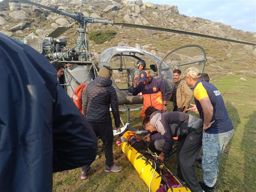The Rumbling Earth: The Story of Indian Earthquakes by CP Rajendran, Kusala Rajendran. Penguin Random House. Pages 242. Rs 699
Book Title: The Rumbling Earth: The Story of Indian Earthquakes
Author: CP Rajendran, Kusala Rajendran
Manu Moudgil
Earth remains an ever-evolving entity, sculpted by the forces of nature over millennia. Among these forces, seismic activity stands out as a natural phenomenon we know the least about. The mysterious nature of earthquakes makes them the most dreaded too.
In ‘The Rumbling Earth: The Story of Indian Earthquakes’, seismologists CP Rajendran and Kusala Rajendran untangle this mystery to bring some clarity and hope. They take the readers on a journey through the seismic conundrum of the world. The focus, however, remains on the Indian subcontinent, a global hotspot because of its tectonic plate pushing into the Eurasian plate. No wonder then that the studies done in the region gave many fundamental ideas to earthquake science.
The authors skilfully trace the evolution of knowledge around earthquakes and how these have been shaping our planet. Reading this book, one can’t help but contemplate the fragility of human existence and our insignificance in the vastness of earth’s journey. From the formation of the mantle to the continental drift which shaped our present globe, the formation of the mighty yet unstable Himalayas, and the rise and fall of oceanic floors, volcanoes and tsunamis, it’s a timeline of big events that reverberate through our small built-up world.
While the science may get technical at times, the authors ensure accessibility through repeated explanations and highlighted text.
The most intriguing part of the book comes when the seismologists don detective hats to examine ancient temples and geological outliers to trace historical earthquakes. For instance, the investigation into the 2004 earthquake and the subsequent tsunami in the Indian Ocean led to the discovery of a previously unknown tsunami that hit the region around 1,000 years ago. The scientists also delve into religious texts, books of world travellers and medieval poetry to supplement the field observations.
We travel from the Rann of Kutch to the caves of Nepal, the temples of Uttarakhand to the beaches of Kerala, the forts of Himachal Pradesh, and the floodplains of Brahmaputra as major earthquakes are revisited, new discoveries are made and concepts explained to decipher the ground beneath us. Land rising to form bundhs that dam rivers, mountains sliding down, sea turning into a salt marsh, trees uplifted by several feet or sunk into the ground, the world as we know it can get jumbled with the next big shudder.
The book details theories like why the Himalayas are due for another big quake, how dams and reservoirs can promote seismic activity, and why alluvial soil enhances the strength of tremors.
We also come across personal accounts of survivors, people who saved lives or went on to work in the disaster management sector, but these are very few as the authors mostly focus on science and history.
The book emphasises on the famous saying, “Buildings kill people, not earthquakes.” Sadly, while scientists are trying hard to predict the next big shock with the help of sensors, satellite-based remote sensing, radar imaging, and now artificial intelligence, governments are failing to ensure that the built environment is resilient enough to absorb the tremors. Even though seismic codes and engineering solutions such as seismic dampeners and rubber-based isolators are available to prevent loss of life and property, the rules remain poorly implemented.
The September 2015 earthquake and tsunami that struck the central coast of Chile only caused 13 deaths because the country has implemented strict building codes. In India, the spree of building violations in the densely populated plains and wider highways and big dam projects in the Himalayas suggest that we are leaving no stone unturned for major fatalities during the next big event.














